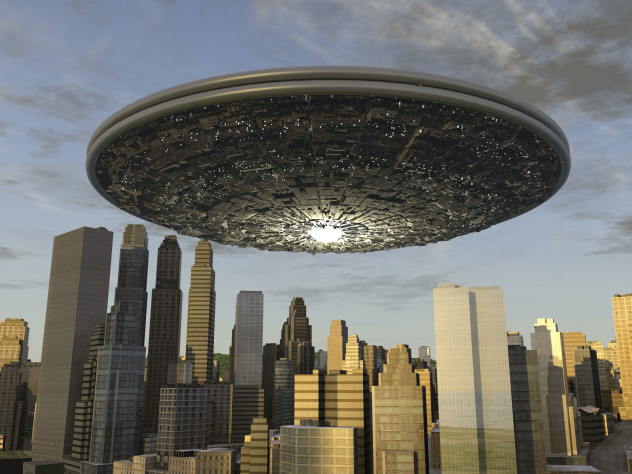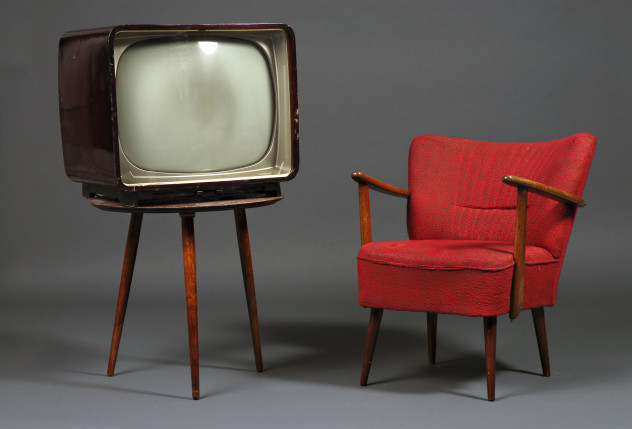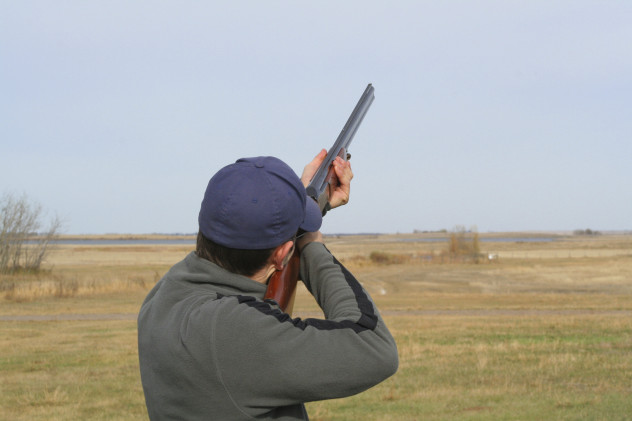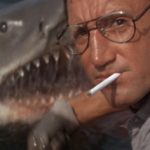 Travel
Travel  Travel
Travel  Creepy
Creepy 10 Haunted Places in Alabama
 History
History Top 10 Tragic Facts about England’s 9 Days Queen
 Food
Food 10 Weird Foods Inspired by Your Favorite Movies
 Religion
Religion 10 Mind-Blowing Claims and Messages Hidden in the Bible Code
 Facts
Facts 10 Things You Never Knew about the History of Gambling
 Weird Stuff
Weird Stuff 10 Cool and Creepy Facts about Collecting Tears
 Humans
Humans The Ten Most Lethal Gunslingers of the Old West
 Misconceptions
Misconceptions 10 Phony Myths and Urban Legends That Just Won’t Die
 History
History 10 Amazing Roman Epitaphs
 Travel
Travel Top 10 Religious Architectural Marvels
 Creepy
Creepy 10 Haunted Places in Alabama
 History
History Top 10 Tragic Facts about England’s 9 Days Queen
Who's Behind Listverse?

Jamie Frater
Head Editor
Jamie founded Listverse due to an insatiable desire to share fascinating, obscure, and bizarre facts. He has been a guest speaker on numerous national radio and television stations and is a five time published author.
More About Us Food
Food 10 Weird Foods Inspired by Your Favorite Movies
 Religion
Religion 10 Mind-Blowing Claims and Messages Hidden in the Bible Code
 Facts
Facts 10 Things You Never Knew about the History of Gambling
 Weird Stuff
Weird Stuff 10 Cool and Creepy Facts about Collecting Tears
 Humans
Humans The Ten Most Lethal Gunslingers of the Old West
 Misconceptions
Misconceptions 10 Phony Myths and Urban Legends That Just Won’t Die
 History
History 10 Amazing Roman Epitaphs
10 Fascinating Facts About Steven Spielberg
He is one of the most famous (and most hated) individuals in Hollywood. Depending on which film critic you ask, he was either one of the film directors who infantilized the film industry (by introducing regressive blockbusters over more mature films) or one of its great visionaries and success stories. Since Steven Spielberg is considered such a mainstream filmmaker, people don’t really look into his career to the same extent they might of a more highbrow director like Stanley Kubrick. But there are plenty of incidents and nuances in Spielberg’s life and career that are worth looking into in order to get a more nuanced view of his dozens of classic films.
10The Horrors Of His First Film

For years, Steven Spielberg had a reputation in the film business as a wunderkind, and he more than lived up to it. His first commercially screened film, 1964’s Firelight, was a two-hour movie he shot on the weekends when he was only 16. This movie about an alien invasion (which is so silly that it ends with a shot of alien shadows as they flip a coin to decide whether they’ll invade the Soviet Union or the US first) was actually commercially screened in his hometown of Phoenix, Arizona.
It reportedly made a profit of either $1 or $100, a discrepancy of a type that would be familiar to Spielberg when he was later exposed to Hollywood’s creative accounting. However, the film was almost entirely lost because Spielberg sent the film to a producer as a demonstration of his directorial skills and the producer failed to hold onto it. Not that Spielberg seems to be particularly mourning it, as he called it “one of the five worst movies ever made.”
Yet, one aspect of the film left a lasting impression on Spielberg beyond just giving him an interest in extraterrestrials. Because of how crazily ambitious Spielberg’s first movie was, he would go on in his teen years to manage to secure the use of airplanes, jeeps, and—most significantly—a room in a hospital. During the hospital shoot, something happened that seemed to shock Spielberg. As he later said, he “had to imagine there were lights, props, and makeup men to keep from vomiting,” but left the details of exactly what he saw intriguingly vague.
9Marijuana Might Have Cost Him His First Oscar

Since one of the five worst movies ever made was hardly going to get Spielberg much work, he made a new calling card movie in 1968 when he was 22. This was his first film project for hire. It was a short film called Amblin’ and it was a dialogue-free movie about a young countercultural man and woman who meet on a bus, go out on an excursion to smoke weed, and have sex. Their relationship comes to a “tragic” end when she looks inside his guitar case and sees that he has a bunch of items—like a book, a business suit, toilet paper, and so on—that indicate he’s a square who has been pretending to be a hippie to lead her on.
Although Steven Spielberg came to dismiss the movie as being as smart as “a piece of driftwood” or “a Pepsi commercial,” at the time it was finished the film had its supporters. Dennis Hoffman, under whose supervision Spielberg had directed the movie, thought he had an Oscar winner on his hands and campaigned extensively.
In the first instance of Spielberg’s notoriously difficult relationship with the Academy of Motion Picture Arts and Sciences, his movie wasn’t even nominated. According to Hoffman, in his subsequent talks with people in the industry at the time he learned that the Academy (which was very conservative at the time) was turned off by the movie because of the casual use of marijuana both in the film and the advertising.
8The Bumbling TV Years

In part based on having proven himself with Amblin’, 1969 found Spielberg doing his first professional television work on the series Night Gallery, a sort of follow-up to Rod Serling’s The Twilight Zone. His first job was a segment for the pilot episode entitled “Eyes,” starring Academy Award–winning actress Joan Crawford as a blind woman who gets an eye transplant just in time for a blackout. At 22 years of age, Spielberg was by far the youngest person on a set where most of the other people were about 50.
Because he was inexperienced, had to indulge a star actress, and wanted to show off his skills with stylized shots, Spielberg ended up doing what was considered a botched job which had to be saved in the editing room. For example, for a sequence where optic nerves are supposed to be transferred from one patient to another, Spielberg didn’t shoot any surgical footage to make the transplant sequence coherent. At the end of the job, he had a reputation as a screwup and, even worse, as an avant garde director.
A year later, he got his second chance, again for the show Night Gallery on a segment called “Make Me Laugh” about a guy who enters in a sort of Faustian bargain to become the most successful comedian ever.
This time, Spielberg’s work was considered bad enough by the network that there were demands he be fired. Instead, scenes of it were reshot and parts recast. Coincidentally, the director for the reshot scenes was Jeannot Szwarc, who would later direct Jaws 2. His career was apparently right behind Spielberg’s for a while. All of this was enough to almost convince Spielberg to quit show business entirely but, fortunately, in 1971 he got the job directing Duel, a truly classic suspense film which revitalized his career.
7Toilets: The Motion Picture
After Duel, Spielberg became interested in adapting a book that might seem quite surprising for him to have been interested in, even knowing that he was the executive producer of shows with segments like the above clip from Animaniacs. In 1969, Wallace Reyburn published a book about the invention of toilets called Flushed with Pride: The Story of Thomas Crapper. The book actually exaggerated his role in creating modern flush toilets, and contributed to the misperception that feces got the slang name “crap” because of him. Spielberg got his friends Willard Huyck and Gloria Katz, soon to be famous as the writers of American Graffiti, to write a treatment for it.
In 1972, this might not have seemed as blinkered of a notion as it probably does today. The same year, Woody Allen adapted the bestseller Everything You Always Wanted to Know about Sex But Were Afraid to Ask into a hit comedy. Spielberg’s agent, however, completely disagreed. He put a stop to Flushed With Pride’s adaptation by telling him, “Steven, if this is the kind of movie you want to make, I don’t want to represent you.”
6Sitting In A Relic From The Worst Experience Of His Life

In 1973, Spielberg was hired to direct an adaptation of Peter Benchley’s Jaws, which would turn out much better than the book. The production difficulties in the making of the movie are now legendary, between the trouble of working with the shark apparatus to shooting on location on the coast. For Spielberg, though, it seemed borderline traumatic how stressful the shoot was.
The movie became such a great hit that it changed the way that movies are released in the US. One of the main boats used in the shoot, Orca 1, was taken to Universal Studios as part of a tour. For years after that, during stressful periods, Spielberg was rumored to sneak into the tour area and sit in the boat to reflect on how the shoot for Jaws was the hardest time in his life. Well, he did that until the boat was taken apart with a chainsaw and removed from the lot. Presumably, given how rich he is now, he can instead calm himself down by flying around in the spaceship from Close Encounters of the Third Kind instead.
5Built An Empire And Sand Castle Simultaneously

In 1977, George Lucas and Spielberg went on vacation in Hawaii because Star Wars was due to be released in theaters soon, and Lucas wanted to be away when the news broke that it was a complete bomb after he’d put an immense amount of work into it. Similar fears were going around that Spielberg’s Close Encounters of the Third Kind would not perform well either, and he needed a break.
Of course, word reached them that the film was going to be a runaway success. Lucas’s reaction was to get immensely more ambitious, and he and Spielberg had a momentous discussion while working on an elaborate sand castle. During this sand castle construction, Lucas sold Spielberg on the idea of later directing Raiders of the Last Ark because Lucas had hated directing Star Wars so much that he wasn’t about to sit in a director’s chair again for a long time.
Later, commenters noted that while it might sound like a cute image for a couple millionaires to be building a sand castle while discussing business, the undertone of it was likely less pleasant than it might have seemed. At the time, Spielberg’s future was still up in the air with Close Encounters. Lucas now had a science fiction megahit and Star Wars had potentially stolen the thunder from Spielberg’s movie by having so much “warmth and humanity,” instead of the cerebral pleasures of Close Encounters. Of course, ultimately it didn’t, but that was the feeling at the time. It may well have been one of the most tense and domineering sand castle buildings ever undertaken.
4Tore Up An Actor’s Face
Although the 1982 film Poltergeist is usually held up as a horror classic, some horror fans feel that it was not quite the movie it could have been. This is often based on the notion that the family-friendly sensibility that producer Spielberg was developing at the time (for example, he made E.T. the same year) clashed with the darker tone that director Tobe Hooper (of Texas Chainsaw Massacre fame) allegedly would have brought to the movie if left to his own devices. After all, it is a PG-rated film and, even though it went much farther than today’s films in terms of permissible PG-rated content, the film is not very violent. But a look behind the scenes at one of the particularly memorable moments implies it wasn’t nearly so simple.
In by far the most viscerally horrifying shot of the movie, the character Marty, played by Martin Casella, is looking into a mirror when a yellow light comes upon him. He notices a cut that opens along the edge of his cheek, picks at it in confusion, and then his face begins to tear and peel into the sink. Rather than being something that Spielberg thought went too far, it was one he was very hands-on about. He saw Craig Reardon and thought that tearing up a face looked fun, so it’s actually Spielberg’s hands peeling the gelatin mask off him. That’s not usually how producers act when they feel that a scene might be crossing the line.
3Tried To ‘Protect’ Lucas

In 2008, Spielberg and Lucas’s sand castle meeting yielded its worst result with the release of Indiana Jones and the Kingdom of the Crystal Skull. Although it was a commercial success, critics and fans seemed to complain endlessly about it. The most recurring complaint related to a scene where Indiana Jones stumbles into a fake city used for nuclear testing, gets into a refrigerator, and survives the blast because the box is lead-lined. Even in the world of Indiana Jones, which is filled with fantasy and mythology brought to life, this broke many people’s suspension of disbelief much in the same way that carrying the Holy Grail past the seal broke the floor at the end of Indiana Jones and The Last Crusade.
Years later, amid numerous fan complaints that George Lucas had ruined the Indiana Jones film series (only a few years after he had supposedly ruined Star Wars with his prequels), Spielberg came forward to try and lower the amount of abuse Lucas was receiving a little bit by claiming that the loathed refrigerator scene was his fault. “Blame me” was his succinct way of putting it. Lucas, however, refuted that the terrible idea was Spielberg’s saying, “He’s trying to protect me.” It has to be the only time two successful filmmakers both tried to take the blame for the worst scene in their movie. But, it’s all right: No doubt some fans still have enough blame to go around for both of them to share.
2Commemorates Movies With Guns

Despite being a staunch and active Democrat (who dislikes how the Republican party went from being so progressive in the 19th century to how conservative it is now), Spielberg does see eye to eye with America’s gun nuts in some ways. Spielberg supposedly has one of the largest gun collections on the west coast, and celebrities like Charlton Heston and Shia LaBeouf claimed he was an avid skeet shooter. He supposedly took a gun from each movie and sent it off to be engraved, a process which LaBeouf (if he has any credibility left) said takes a year. There are no reports that he plans to replace his prized collection with a walkie-talkie collection.
Apparently, this affection for guns first manifested during the preproduction for 1941 when Spielberg was hanging out with Conan the Barbarian and Red Dawn director John Milius and 1941 screenwriters Bob Gale and Robert Zemeckis. It was fairly surprising that Spielberg picked up the hobby even back then because supposedly the shooting gave him tinnitus.
1Father Issues

It would be hard for most of us to escape the shadow of a family member that became arguably the most famous movie director in the world, but Arnold Spielberg seems up to it. He is credited as one of the developers of the first computer used in a business environment, invented the first cash register on an electronic network, and the first electronic library system, among other technical accomplishments. It’s possible Arnold Spielberg has a greater impact on your daily life than his son does.
Arnold had an occasionally problematic response to his son’s movie career. At one point, Arnold kicked his son out of his home because Steven’s editing of his first movie was taking up his living room and interfering with his father’s love life. Later on, he told his son “I hated 1941” after the movie finished its difficult production, and Steven just said, “Don’t talk to me, Dad.” He also went on record as not liking Raiders of the Lost Ark. Film critics have said that Steven expressed his issues with his father by caricaturing him as the male protagonists with masculinity issues in many of his early films.
Dustin Koski is also featured in Listverse’s Astounding Bathroom Reader.








